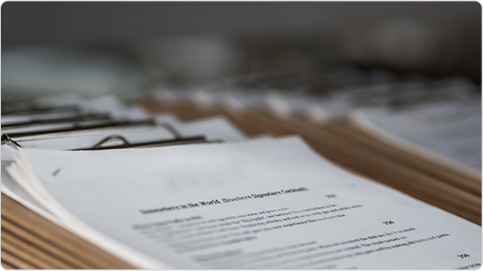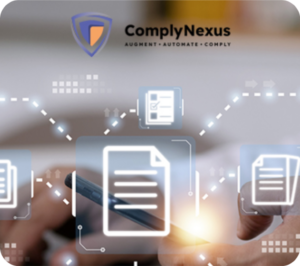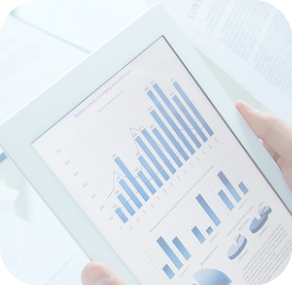Using predictive analytics in compliance is an advanced approach to ensuring compliance with various standards and regulations even in the future. This article explains the usage of predictive analytics in your organization’s compliance process. Start reading to see how it can transform your idea of achieving compliance and staying compliant.
What Is Predictive Analytics? Defined in the Context of Compliance
Predictive analytics in compliance is the use of data analysis, artificial intelligence, machine learning, and statistical models to find patterns that might predict the future compliance condition of your organization. It’s a visualization method, showing the upcoming compliance details.
The Role and Importance of Predictive Analytics in Compliance
The role of predictive analytics in compliance is to predict future compliance problems, identify hidden risk patterns and correlations, signalize deviation from compliance standards and policies, and assist in making well-informed decisions.
Early Prediction of Compliance Problems
By analyzing huge amounts of data, predictive analytics gives you the benefit of predicting compliance problems or issues. This way you’ll be aware of the compliance difficulties, including the events of non-compliance even before they occur. Consequently, you’ll save yourself from the scary consequences of non-compliance.
For example, you have achieved complete compliance with GDPR. But your organization is in its growing state. Thus, in the coming years, you’ll have a bigger team and more customers. Here, predictive analytics can help you predict if your organization will be GDPR-compliant in the future, or if you’ll have to deal with any issues.
Indication of Deviations From the Compliance Policies and Regulations
Predictive analytics points it out when your organization deviates from the compliance policies and regulations. It ensures that you quickly change your path, and act according to the compliance policies, standards, and regulations.
Say that you need to comply with HIPAA. Therefore, you are trying to align your organization’s operations with it. But mistakenly, you perform an action that goes opposite to HIPPA requirements. In that case, predictive analytics will inform you about the respective deviation, and save you from future compliance issues.
Identification of Hidden Risk Patterns and Correlations
Sometimes, you struggle with non-compliance because you believe that particular factors aren’t related to each other. While in reality, they are deeply connected to one another. In such scenarios, predictive analytics identifies the hidden risk patterns and relations between certain factors.
Consequently, it ensures that you understand the relationships between the respective factors, consider them during your compliance process, and mitigate risks.
Assistance in Well-informed Decision-making
Offering you the future compliance information of your organization, predictive analytics significantly assists you in making well-informed decisions. You’ll definitely be extra careful and create better strategies when you already know about what might go wrong in the future.
Imagine implementing a security technique that’ll help you comply with the security regulations. Now, predictive analytics shows you that this practice won’t be as effective in the future. As a result, you might choose an advanced security method instead of the one you chose previously.
Top Compliance Areas Where You Can Use Predictive Analytics
The top compliance areas where you can use predictive analytics, include compliance with security and safety regulations, healthcare regulations, and tax regulations.
Security and Safety Regulations
Predictive analytics analyzes data from multiple sources, like sensors, incident reports, surveillance footage, etc., to predict possible security breaches, security threats, safety hazards, and compliance violations. Considering the predictions, you can implement sufficient security methods and techniques to prevent them, and comply easily with the safety regulations.
Healthcare Regulations
When it comes to the use of predictive analytics in healthcare organizations, it observes the personal and payment details of the patients along with their medical history and records. Using the same information, predictive analytics predicts the potential events of information theft and fraud, helping healthcare organizations apply preventive measures, and align with healthcare regulations.
Tax Regulations
The tax applies to every organization. Plus, there are tax laws that you need to comply with. Predictive analytics identifies potential tax risks, forecasts tax liabilities, and optimizes tax planning methods. Moreover, it predicts future tax obligations and the impact of any changes in the tax laws, giving you all the necessary information and letting you achieve compliance with tax regulations at all times.
Conclusion
So, now you have the answer to “What can predictive analytics be used for when it comes to the compliance process?” Predictive or advanced data analytics in regulatory compliance smoothens the compliance process of your organization by taking you into the future and showing you any possible compliance issues and risks.
Check out the main points of this article here:
- Compliance processes and data analytics make a great combo for organizations that crave complete compliance even in the future.
- Predicting compliance issues, indicating deviations from compliance, identifying hidden risks, and assisting in making informed decisions are some superpowers of predictive analytics in compliance.
Now, are you looking for a data analytics compliance program or compliance document management system? Start your free trial of ComplyNexus today.
 Skip to content
Skip to content




